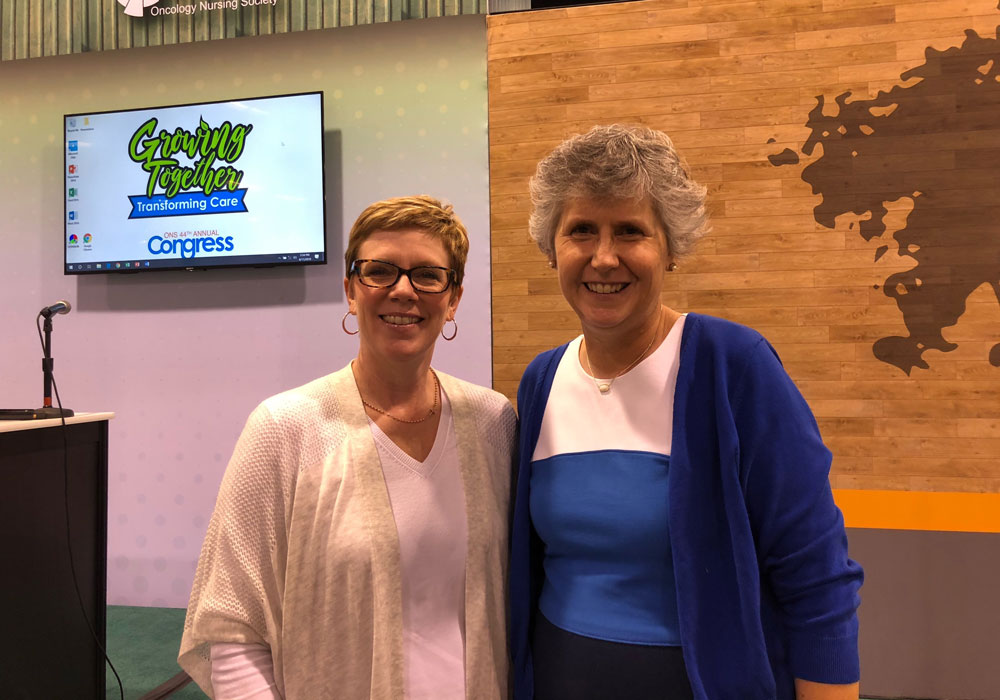During the 44th Annual ONS Congress in April 2019, some sessions featured a Continuing the Conversation event following the main session. As a speaker, this might have been the best part for me. It was filled with unexpected, wonderful surprises and great conversations with oncology nursing colleagues.
For an hour following my presentation on genetics and genomics, attendees and I discussed topics that deserved more in-depth exploration. And I had the opportunity to network with people who have an interest in my passion. The best part about the ongoing discussions was that they had no formal agenda. As the speaker, I could elaborate on a topic in more detail while also taking participants’ questions to facilitate discussion.
We had a tremendous amount of conversation about how to prepare nurses for the revolution that’s occurring in genetic and genomic care. As the mother of three relatively new graduate nurses, I know that the content provided in undergraduate education about genetic and genomic topics is limited at best. No dedicated section or class covers the content. The Congress discussion centered around the fact that nurse educators must identify ways to provide this information to all levels of nursing students. It shouldn’t be considered fluff or optional content if time permits.
As a clinician, I also know that educating practicing nurses so they can provide competent, safe genomic care is an enormous challenge. Many nurses want and need more education about genetics, as was obvious from the number of attendees at the Congress session and its follow-up Continuing the Conversation event.
Connecting With Others
Prior to the Continuing the Conversation session, I knew I could expect a great discussion with my oncology nursing colleagues, but I was not prepared for what happened next. As we conversed about concrete ways to educate practicing nurses about basic genetics and genomics content, I suggested a recent piece from the Clinical Journal of Oncology Nursing (CJON). The Genetics and Genomics column in the April 2019 issue was about using a flipped classroom to teach adult learners about genetic concepts. The author had initially approached the CJON publications team about the topic, and they referred her to me. I worked with her on the topic, and the paper was accepted for publication. But when I recommended it to the audience, I had no idea Kelliann Fee-Schroeder, RN, BSN—the author—was in the audience. After all that time working together, we finally got to meet in person and talk some more.
Providing genetics and genomics competency education is a huge need in oncology nursing for both student nurses and practicing clinicians. It’s also a clear priority for ONS, as the Society releases new educational programs, journal articles, toolkits, and committee work on the important topic.
An amazing benefit of ONS membership isn’t just the access to quality continuing education: it’s also the networking opportunities like my Congress experience demonstrates. As an associate editor, it was gratifying and energizing to meet the author I had communicated with by phone and email and to see her joy in getting the article published. It’s gratifying to work with authors from many different backgrounds, and it’s exciting to see an article make it to publication—a place where it has real implications and the potential to improve clinical practice. So if you ever have an idea for an article like Kelliann did, CJON’s associate editors are open, willing, and excited to work with you to make it a reality.






